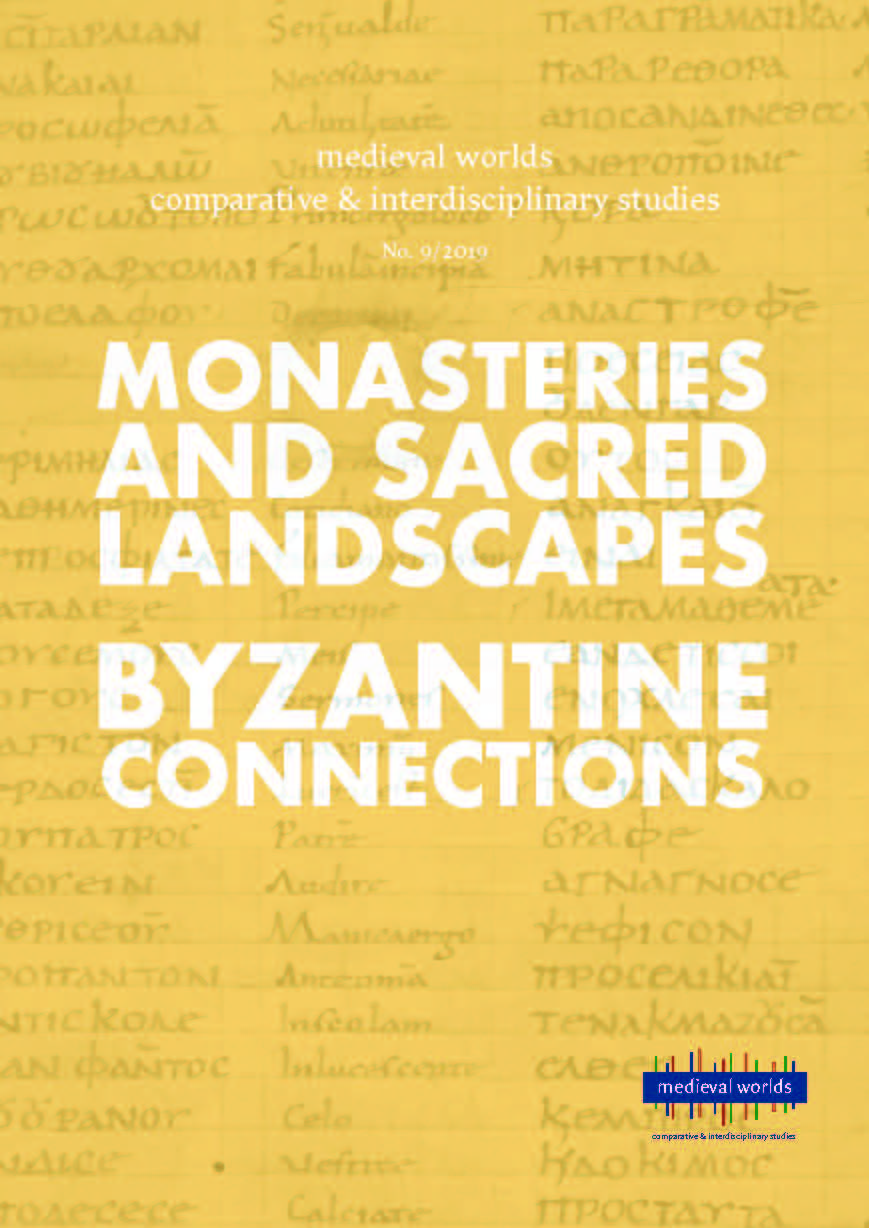 |
 |
Walter POHL – Andre GINGRICH (Eds.)
medieval worlds • no. 9 • 2019
Monasteries and Sacred Landscapes & Byzantine Connections
Matheus Coutinho Figuinha
S. 82 - 111 doi: 10.1553/medievalworlds_no9_2019s82
Verlag der Österreichischen Akademie der Wissenschaften doi: 10.1553/medievalworlds_no9_2019s82
Abstract:
Focusing on the cases of Martin of Tours’ Marmoutier, the monastery of Lérins, and the Jura monasteries, this article explores the conceptions and interactions of Gallic monks with the human and natural environments in relation to their subsistence. Fourth- and fifth-century authors described these monasteries in similar terms, relying on both Christian and classical literary models. Accordingly, the local human and natural environments were depicted as characteristic of a remote desert. Archeologists, however, have shown that these monasteries were not isolated. One of the reasons for that, I argue, is that they depended on the contributions of visitors and on urban and commercial centers for their own existence. I also argue that, due to different conceptions of the monastic life and practice, monks’ interactions with the human and natural environments varied greatly from one monastery to the other. At Marmoutier, Martin’s disciples relied on the woodland nearby and on the Loire to get part of what they consumed. But because they did not practice manual labor, they may have acquired most of the necessary food from local farmers. At Lérins, where all the monks were required to work, it is possible that they practiced agriculture. But because of the restricted extension of the cultivated terrain and the Mediterranean climate, they did not produce all the food they consumed. As for the Jura monasteries, the monks deforested and cultivated large areas. They also reared cattle, poultry, and sheep, and constructed a mill and tilting hammers to grind grain. But their effort to sustain themselves only through the work of their hands was not enough, for they also relied on the Burgundian kings and pilgrims for their subsistence. The Jura monasteries in particular show us that the practice of agriculture is not per se evidence of economic autonomy.
Gaul; human and natural environments; monasticism; Marmoutier; Lérins; Jura Fathers. Published Online:
2019/06/28 10:44:09 Document Date:
2019/06/28 10:36:00 Object Identifier:
0xc1aa5576 0x003abd5d
Rights:All rights reserved.For questions regarding copyright and copies please contact us by email.
medieval worlds provides a forum for comparative, interdisciplinary and transcultural studies of the Middle Ages. Its aim is to overcome disciplinary boundaries, regional limits and national research traditions in Medieval Studies, to open up new spaces for discussion, and to help developing global perspectives. We focus on the period from c. 400 to 1500 CE but do not stick to rigid periodization.
medieval worlds is open to submissions of broadly comparative studies and matters of global interest, whether in single articles, companion papers, smaller clusters, or special issues on a subject of global/comparative history. We particularly invite studies of wide-ranging connectivity or comparison between different world regions.
Apart from research articles, medieval worlds publishes ongoing debates and project and conference reports on comparative medieval research.
Table of Contents
Editor’s Preface
Walter Pohl and Ingrid Hartl
Monasteries and Sacred Landscapes
An Old Ritual Capital, a New Ritual Landscape:
Understanding the Transformation of Angkor Thom, Cambodia:
through the Construction and Placement of Theravāda »Buddhist Terraces«:
Andrew Harris
The Monasteries of Athos and Chalkidiki (8th-11th Centuries): A Pioneering Front?
Michel Kaplan
Pro qualitate loci et instantia laboris:
Monasteries and their Human and Natural Environments in Late Antique Gaul
Matheus Coutinho Figuinha
The Limitations of Asceticism
Albrecht Diem
Byzantine Connections
Greeks and »Greek« Writers in the Early Medieval Italian Papyri
Edward M. Schoolman
Resenting Byzantine Iconoclasm. Its Early Reception in Italy
through an Inscription from Corteolona
Francesca Dell’Acqua and Clemens Gantner
Mercantile and Religious Mobility between Byzantines, Latins and Muslims,
1200-1500: On the Theory and Practice of Social Networks
Johannes Preiser-Kapeller and Ekaterini Mitsiou
»A Universal Narrative of Humanity«. Travelling to the ›Other‹
from Constantinople: Priscus of Panion (5th c. CE)
and William of Rubruk (13th c. CE)
Pia Carolla
|




 Home
Home Print
Print
 References
References
 Share
Share
